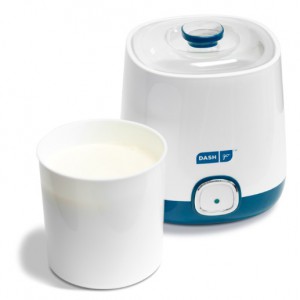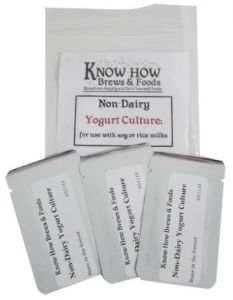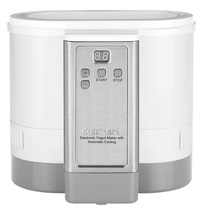Lots of people know yogurt as a tasty, sweet and tangy snack. But, did you know that yogurt also has plenty of health benefits, too?
It’s not about the sweetened yogurt on the market. Though, eating that yogurt isn’t so bad—after all, it’s a much better snack than greasy chips or sugary cookies. Yogurt made with natural sweeteners like fruits or just plain yogurt make excellent additions to any healthy eating menu.
But, yogurt is a super food, too.
It’s pack with plenty of vitamins and contains nutrients essential to maintaining a healthy body, specifically a healthy gastrointestinal system.
Don’t believe yogurt health benefits? Well, keep reading on to learn why yogurt has plenty of health benefits.
Yogurt Health Benefits
Yogurt is a pretty unique food. It’s filled with nutrients and vitamins, yet some people think it’s all about being sugary sweet. But, like any foods on the market, you can buy sweetened yogurt and unsweetened yogurt and even those that have enough sweeteners to make eating it worth it.
Yogurt is considered an important source of many essential nutrients and vitamins, including riboflavin, phosphorus, potassium, protein, calcium and vitamin B-2 and B-12. Much of the caloric and nutritional content in yogurt is also found in milk, particularly the same milk used to make it. That makes yogurt a great alternative for people who don’t like or can’t drink much milk.
Benefit #1: Probiotics in yogurt may help boost the immune system.
Yogurt, specifically yogurt with active cultures, may help boost the immune system. If you’re wondering how that’s done, it’s mainly because probiotics help rebalance the gut’s microflora, otherwise known as the healthy bacteria that resides within the gastrointestinal system.
Healthy bacteria helps protect the gastrointestinal system and helps keep everything running smoothly. But, according to medical research, probiotics may also have an effect on boosting the efficiency of the immune system, too.
Probiotics were found to have ‘helped improve the health of people with inflammatory bowel disease by altering the intestinal flora and stifling the immune system’s response to the disease.’
It was also found to help ‘enhance resistance to illnesses of the gut and improve recovery from different infections.’
Benefit #2: Yogurt may help people prevent the onset of osteoporosis.
Many health experts say that the ‘key to help preventing the onset of osteoporosis is getting enough nutrition everyday.’ The most important micronutrients that people should consume, to prevent the onset of the condition, as calcium and vitamin D.
Yogurt is a great source of calcium and vitamin D. Many healthier yogurt brands have plenty of calcium and are fortified with vitamin D. Increasing your intake of both is said to have a significant ‘beneficial effect on bone mass,’ no matter your age.
Benefit #3: Yogurt may help people reduce their risk of developing high blood pressure.
According to a study, which followed over 5,000 university graduates in Spain for a period of two years, there’s a link between dairy intake and a risk of high blood pressure.
The study revealed a ’50 percent reduction in the risk of developing high blood pressure,’ mainly among people who ate as much as 2 to 3 servings of low-fat dairy or dairy-free each day. That was compared to people who didn’t consume the dairy every day.
Most of the low-fat dairy consumed during the study was milk, however many researchers believe that low-fat yogurt may produce the same result.
Another Dutch study showed that, too. Higher daily consumption, mainly from milk and yogurt, was found to be ‘linked to lower blood pressure in men and women aged between 50 to 75 years old.’
Benefit #4: Yogurt can help you feel full.
Yogurt can help people feel satiated. That’s what a study from the University of Washington revealed when they researched and tested hunger, fullness and caloric intake among 16 men and 16 women who had consumed a 200 calorie snack.
The snacks used in the study were peach juice, peach-flavored dairy beverages, semi-solid yogurt with peach pieces and drinkable yogurt with peach.
The people who did consume the yogurt didn’t eat fewer calories once they had their next meal. But, the study did discover something interesting. The people who ate both types of yogurt had ‘lower hunger ratings and higher fullness ratings’ than people who had consumed the other snacks. So, the next time you consume yogurt, think about that.
Benefit #5: Yogurt can be consumed by those who are lactose intolerant.
People who are lactose intolerant may not be able to eat dairy products, and a lack of dairy means they miss out on various natural vitamins and nutrients.
But, people with lactose intolerance can eat yogurt. It’s because the lactose in milk gets converted to lactic acid by the bacterial cultures used to create yogurt. That helps lessens the effects of the intolerance. There are also special soy or rise milk yogurt recipes to make yogurt at home with your own yogurt maker.




 Making Homemade Greek Yogurt: Closing Thoughts
Making Homemade Greek Yogurt: Closing Thoughts
 Yogurt: The Super Food?
Yogurt: The Super Food? Healthy Yogurt and Probiotics
Healthy Yogurt and Probiotics


